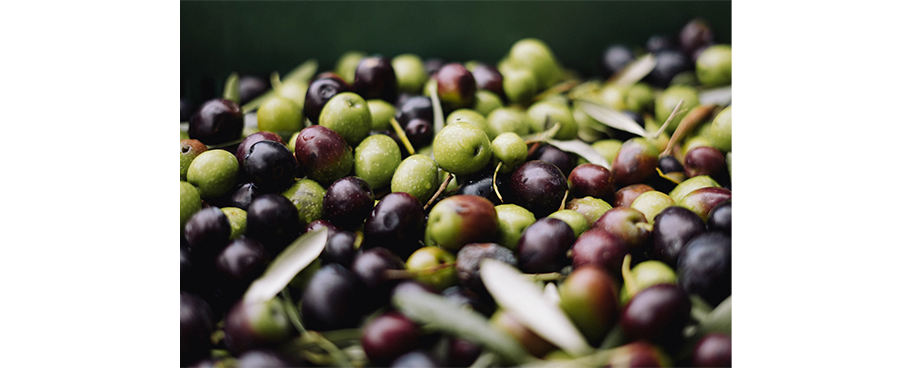Methane production from alperujo and microalgae

The present technology is part of the sector of the use of by-products of the food industry. In particular, the object of the invention is an improved process for the production of methane from the anaerobic co-digestion of alperujo, the main by-product generated in the elaboration of olive oil, by means of the elaboration system by centrifugation in two phases, with the microalgae Dunaliella salina.
The alperujo is the main by-product resulting from the extraction of olive oil in the oil mills, and shows a high water content (56%), an acid pH (5.4) and a high content of organic matter (91%). much of it lignin in nature (35%). In addition, alperujo has a high fat content (3-4%) and also water-soluble polyphenoies (0.9%), fractions that give it phytotoxic properties. In addition, alperujo is deficient in nitrogen, therefore, the anaerobic digestion process of the same is associated with a nitrogen deficiency that is reflected in the metabolism of the microorganisms and therefore in the yields of biogas and methane production. In conclusion, alperujo is very problematic both for its characteristics (low pH, high organic load, high content of reducing sugars, etc.) and for the quantities in which it is generated (from 2,000,000-4,000,000 t / year) and its treatment is very necessary.
The present technology refers to a process for obtaining methane from alperujo or solid oil mill waste (OMSW), by anaerobic co-digestion of a substrate comprising alperujo with microalgae, characterized by that the microalgae is Dunaiielia salina.
The substrate comprises a mixture of alperujo and Dunaiielia salina in a ratio between 90:10 and 95: 5 in volatile solids, and more preferably where the substrate consists of a mixture of alperujo and Dunaiielia salina 95: 5 in volatile solids. The procedure comprises the following steps:
(a) adding a substrate consisting of a mixture of alperujo and Dunalieil saline to the digestion reactor;
(b) addition of microbial inoculum to the digestion reactor in proportion of volatile inoculum solids: substrate between 3.0 and 0.5; preferably 2:1.
The use of a suitable microbial inoculum in step (b) of the procedure is essential for the proper development of these anaerobic digestion processes. The inoculum of step (b) is selected from anaerobic sludge from wastewater treatment plants or stations (WWTP), or mature microbial inoculums from agri-food industry reactors.
Depending on the origin of the microbial inoculum used in step (b), it may still contain undigested remains of the substrate fed into the reactor of origin. This is the case of inocula from industrial reactors or WWTPs. If not previously removed, these remains could alter the results of anaerobic digestion of a new substrate to be treated by anaerobic digestion. Therefore, a time interval of between 38 to 48 hours should pass from when the inoculum is harvested until the inoculum is added in step (b) of the process of the invention.
(c) adding a trace element solution to the inoculum: substrate mixture from step (b). The trace element solution comprises FeCl2 · 4H2G, CoCl2 · 6H2O, MnCl2 · 4H2O, AlCl3 · 6H2O, (NH4) 6Mo7O2 · 4H2O, H3BO3, ZnCI2, CUCI2 · 2H2O, NiCl2 · 6H2O, Na2SeO3 · 5H2O and EDTA.
(d) closure of the digestion reactor and displacement with inert gas, preferably nitrogen gas, of the headspace air.
(e) digestion for a period between 30 and 50 days at a mesophilic temperature of between 20 and 39 ° C, and at a stirring speed between 200 and 500 rpm.
it is interesting to mention that the agitation speed of the digesters in stage (e) of the process of the invention must be carefully selected since very slow speeds could give rise to a low interaction or transfer of the inoculum-substrate and therefore give rise to obtaining low methane yields, while, on the other hand, very high stirring speeds could lead to breakage of the flocs formed by anaerobic microorganisms in the digesters, also leading to low methane yields. Choosing a suitable stirring speed is essential for the smooth running of the process.
The anaerobic digestion of a substrate of a lignoceiulosic nature, such as alperujo, may be limited in the first stage or hydrolysis-acidogenesis stage by the presence of the complex structures of hemicellulose, cellulose and lignin. The use of some pretreatment prior to anaerobic digestion, such as thermal pretreatment, ultrasound, or microwaves, could favor the breakdown of these complex structures, allowing better results in methane yields and production kinetics obtained.
 Bioeconomy and Production Development
Bioeconomy and Production Development